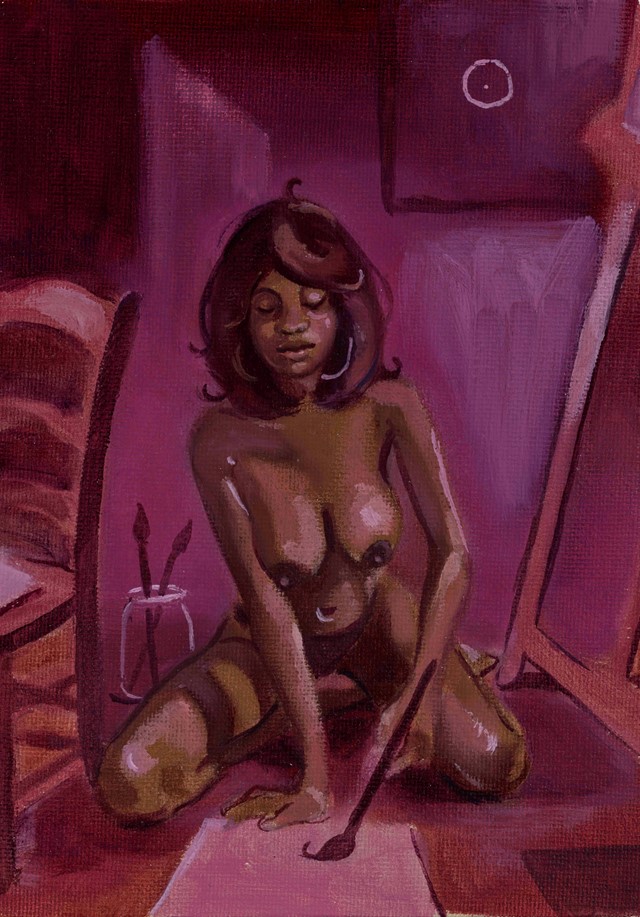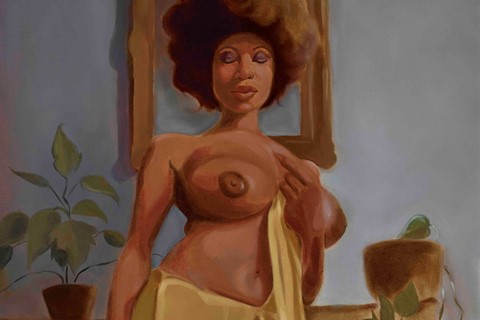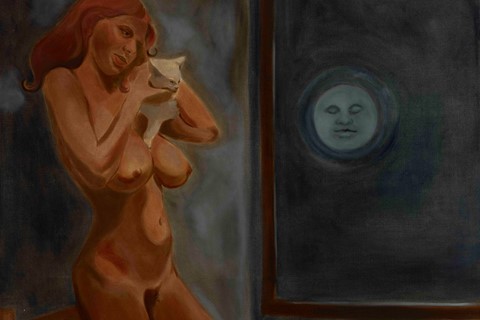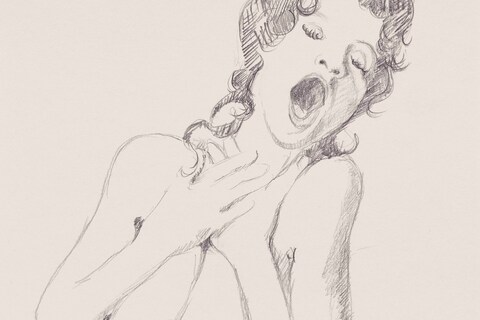As her new exhibition opens in London, British artist Somaya Critchlow discusses her politically-charged paintings, the lack of nude Black women in art history, and her primary influences – which range from Francisco Goya to David Lynch
The female body is not a new subject in painting; it has been explored by artists across the globe and through the centuries. In western art history, the female body is often presented as reclining, passive and white. British artist Somaya Critchlow’s work challenges all this; she began painting Black women in her distinctive style – which is darkly tender and quietly provocative – towards the end of her postgraduate studies. Critchlow approaches the medium with a visionary eye, in response to her experience of having “never really seen the Black female figure portrayed nude.”
“I [had] always felt like there was a ‘right’ way to portray Blackness, in a way that people might like to see or might feel comfortable with and that made me feel a bit confined,” she says. Expanding on her motivation to paint more complex portrayals of Black women, Critchlow says, “I just thought, why can’t that exist in the world?”
12 of Critchlow’s new paintings and drawings are now on display at Maximillian William gallery in London, in an exhibition called Afternoon’s Darkness. A sense of the macabre lingers across these new works, in which Black women are depicted revelling in their solitude – nude, semi-nude or in costume – backdropped by dimly-lit, domestic interiors.
Critchlow’s paintings are often interpreted as making political statements about the roles and identities of Black women. “I think I end up reading a lot of books on politics, whether its sex politics, gender politics, race politics or war politics,” says Critchlow, but she makes it clear that her paintings are “not pushing any sort of political message.” The political nature of her work, as she explains, is because being a Black woman painting Black women, “whether I like it or not, is politically charged.”
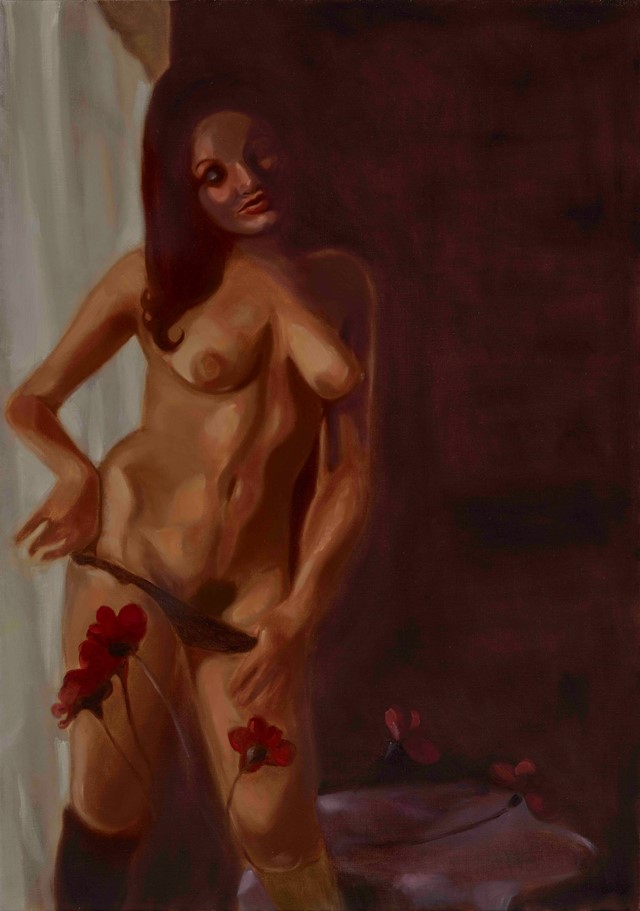
Critchlow had a love of painting in her childhood, which began while her mother was a student at art school. She explains, there were “a few times [when] she couldn’t find childcare, so I would just go to university with her and join in the classes, which was super exciting. I remember the tutor just being like, ‘Here’s an easel, off you go!’” Her practice was also influenced by her grandfather, Keith Critchlow, an artist who, she reminisces, was “always offering me advice and tips.”
Afternoon’s Darkness was produced with the current changing seasons and shortening days in mind – she conceived of the new paintings in a small seaside town in Cornwall. While “being away from London, where everything builds on top of me”, says Critchlow. “I remembered how little I was in comparison to the world and natural forces, and that was really exciting. There’s a lot of blue in the work and being by the sea, I think, impacted my mood and thought processes.”
The influences for this new series of paintings include David Lynch’s Blue Velvet, Eiichi Yamamoto’s rape-revenge anime The Belladonna of Sadness and Francisco Goya’s The Disasters of War prints – artworks with themes of horror and melancholy, reflecting the state of both the world and Critchlow’s mind. “Just before I left to go to Cornwall, the war had broken out in Ukraine,” she explains. “I felt very heavy about life.”
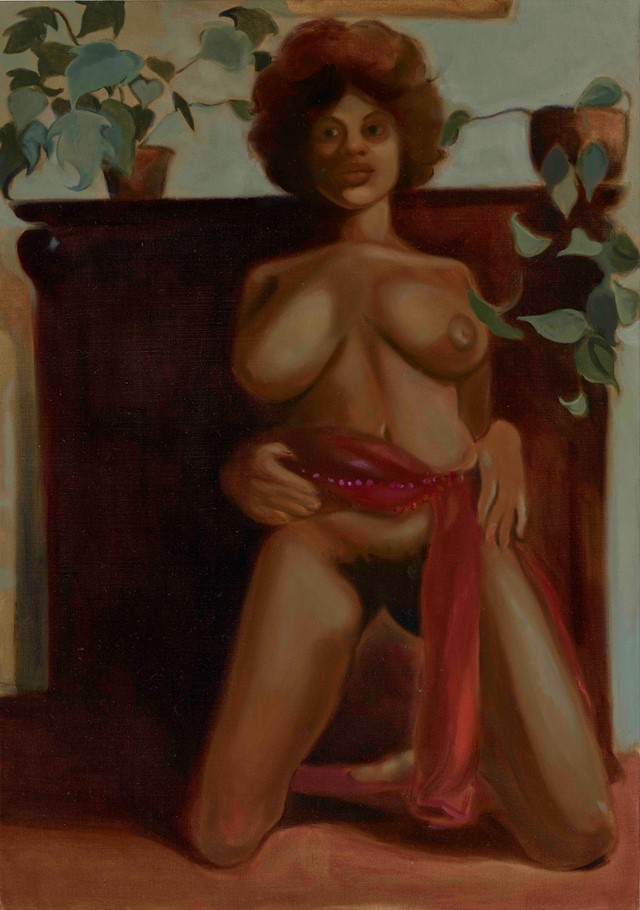
The series is also influenced by Paula Rego’s painting The Maids (1987) which responds to Jean Genet’s 1947 play of the same title; the play has subjugation at its core and explores the servant-master dichotomy. “I just love the play,” says Critchlow. “It’s these two maids and their mistress and they’re acting out this scenario. Really, what [the maids] want is to be in the position of the power that [the mistress] is in, even though they acknowledge how terrible it is for them to be in that position.” In Afternoon’s Darkness some paintings, she explains “touch on the maid costume and the idea of screaming. There’s one that looks very much like a scream of ecstasy and another with a different type of scream.”
Positioning her paintings in relation to art history, Critchlow explains “I’m not trying to go back in time and insert myself. I love the canon and I hate the canon.” She concludes, “I’m just here in this period of time taking from the past, as we all do, and seeing what I can do with it.”
Afternoon’s Darkness by Somaya Critchlow is at Maximillian William in London until November 19, 2022.
